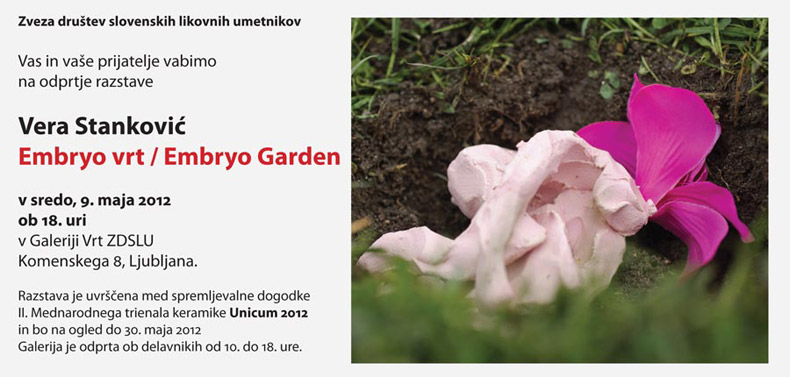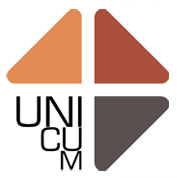
The Ritual of Transformation
Artistic creation develops the need and desire for openness, disclosure and exposure of images, where these frequently integrate into the contemporary interdisciplinary rhythm of expression. Visual images, like those created by Vera Stanković is precisely concerned with the exploration of transformation; firstly she eliminates it from her own deepest essence of the image, and then transfers it into the soft and supple clay, where the idea is transformed into the finality of form and meaning. So the exchange is established incessantly between the support of the image – the artist's personal or deepest ideational essence – and the materialized form of this essence, usually caught into variously formed and positioned human bodies. In most of her creations, produced chiefly in clay, the artist points to herself, to her personal story, which she breaks down through the dynamic diversity of forms, often transcending materiality with the conceptual layers of multifaceted symbolism. Hence what is produced are sort of stilled images, where the rhythm of life is frozen, stiffened like lost memory. Static images are also connected into larger sculptural systems by the artist, almost scenographically, where a greater diversity fused with the idea of the ritual or personal rite prevails. Ritual is therefore established exactly through the process of formation, actualisation and installation. And it is precisely the setting up that can expand into an actively effective process, which brings the exhibition close to performance, in the installation of which the audience is also actively involved. With the images of the human body in different positions, like sorts of places or spaces of images, the artist gives a critical and emotional response to the transience and incapacity of the integrity of life. The series of clay pieces, formed into foetal positions or poses as the body is squashed into a rigid lying down position, is entitled Embryo Garden. Stanković uses this stiffness to greatly expose the sentiments of the suffering. She places the embryonic positions of these beings into the ritual of burial, which takes this series of clay works and the installation itself on a journey through an intensified rituality. Significantly, each shrunken body also contains a flower, an optimistic sign of hope and new growth, which is to flourish from the spasmodic bodies. The viewers to the installation will, together with the artist, lay the clay bodies into previously dug holes. Arranged without a predetermined sequence or logic, but placed where a certain energy is felt. Through the ritual act of burial, a feeling of transgressing space and time is supposed to occur, which limit the living body and all the fears that arise with it. This is also a sign, a sort of record, perception or presence (of the artist herself), which can last much longer than the duration of the installation. After the closing of the exhibition, the artist will leave at least one of the buried clay sculptures in the soil, in the eternity of the installation, in the eternity of the ritual deed. An installation conceived and formed in such a way closely presents all the elements of initiation, in which the subject approaches a specific state of insight and sentiment through a process of materiality and spirituality. Initially the morbid, perhaps even grotesque act of burying the foetus-like figures is focused on the aesthetics of a specific melancholy, yet through the entire process of the act of placing the bodies into the earth, through the rhythm of the burial, it also highlights the idea of the growth of new fruit, of the young herbs that are more apt to new opportunities, to new lives. From the initially pessimistic act of interring the bodies, optimistic trees of life will grow. A plate with the image of the buried piece as it was before the burial will be placed on top of each interred sculpture. The plate is a sign, a personal record of each individual artwork, it is a memory of the image, that can thus transcend space and time, the sentiment and feeling of every moment. Through the photograph, the body in the earth will remind of the image above ground, and will at the same time be the memory of the image in the soil. Reflection on the individual deaths (the death of each individual sculpture) puts life into a new horizon, where a greater sense is born, a sense of understanding the fate of the individual (society) and the control of destiny through personal ethos.
Vera Stanković is an extremely sensitive artist. It is exactly the bodies that she creates in clay that are the dynamic layers upon which she relies to detect her own creative states, states of feeling of life and the direct confrontation with it. The images of those that are not present in real life, live their imaginary journeys of existence with the artistic creation of images, filled with imagination and special emotional states.
Sarival Sosič |



